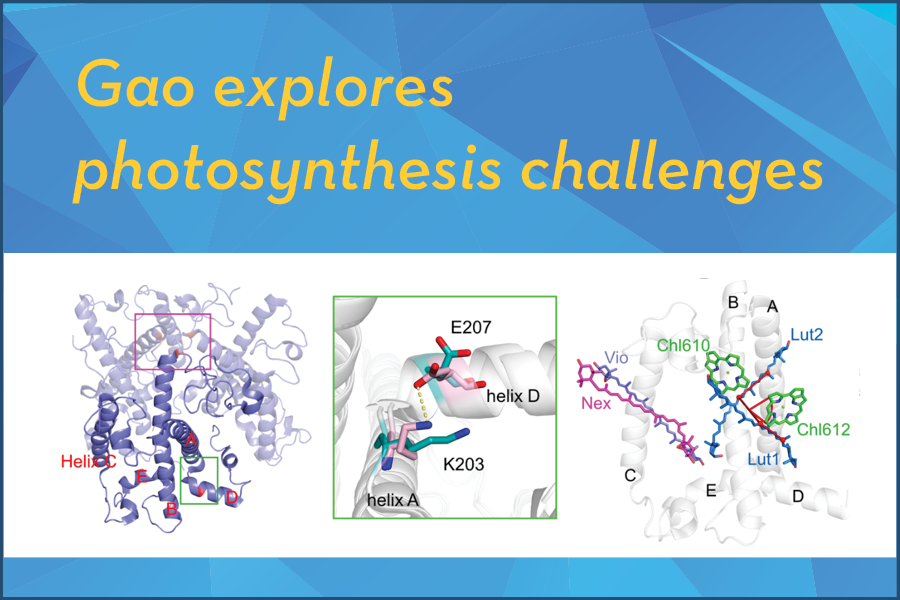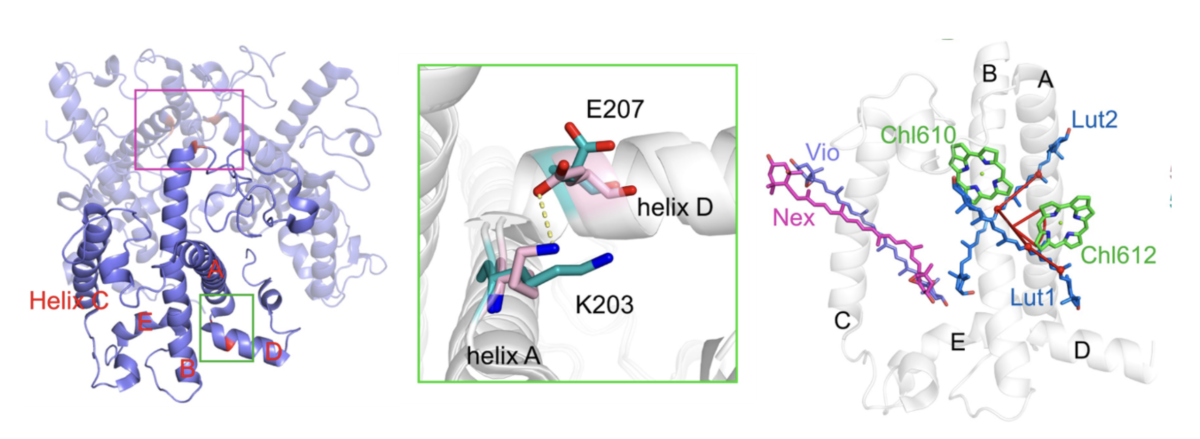MSDFT Calculations Reveal a Quantum-Switch Mechanism in Photosynthesis

MINNEAPOLIS / ST. PAUL (3/1/2024) – Professor Jiali Gao and his collaborators have recently published a new paper in Nature Plants that explores problems and solutions related to photosynthesis and bioengineered plants.
Photosynthesis is a crucial process that sustains life on earth. Bioengineered plants such as soybeans, targeted to accelerate the response time to sunshine fluctuations, can increase biomass production by more than 15%. Therefore, an understanding of the molecular mechanism governing excited-state energy transfer (EET) and dissipation is important; this decades-old problem was unsolved until recently. In a joint theoretical and experimental study, Professor Jiali Gao of the Chemistry Department, and collaborators in the group of Professor Yuxiang Weng at the Institute of Physics, Chinese Academy of Sciences, discovered that the light-harvesting antenna protein in photosystem II, or LHCII, is an allosterically regulated quantum switch. The study found that under bright sunshine, LHCII undergoes conformational changes in favor of excited-state energy dissipation for cell protection. But, under cloudy conditions, the LHCII conformation recovers to a state to promote EET to the reaction center near perfection. This mechanism enables a rapid response to the changes in light intensity, ensuring both high efficiency in photosynthesis and a balance in photoprotection.
The research was published in the journal Nature Plants. The research team employed cryo-EM structure and ultrafast spectroscopy experiments and multistate density functional theory (MSDFT) to simulate the coupling strength of EET between chlorophyll a (Chl612) and lutein (Lut1) in LHCII under different environmental conditions. The computational predictions on LHCII conformation change and its effects on EET were confirmed by cryo-EM structures and fluorescence quenching rates (Figure 1). The study identified an exponential change in the EET rate, highlighting a switch between light-harvesting and energy-dissipation quantum channels, regulated by a small range (0.1Å) of geometry changes (Figure 2) initiated by the change in sunlight radiation.

Figure 1. Experimental fluorescent quenching rates under different conditions (black) and the corresponding computed excited-state energy transfer coupling values between Chl612 and Lut1 (brown).

Figure 2. Cryo-EM structures of LHCII trimer, the interhelix ion-pair, key chlorophyll and lutein chromophores embedded within transmembrane helices A and B under acidic (colored sidechains) and neutral (pink) conditions. Under acidic condition, as a result of full sunshine, the distance between helices D and E is shortened by 0.6 angstroms, pressing transmembrane helices A and B to a wider angle to bring Chl612 and Lut1 closer. The latter favors excited-state energy transfer from the bright S1 state of Chl612 to the dark S1 state of Lut1 for excess energy dissipation.